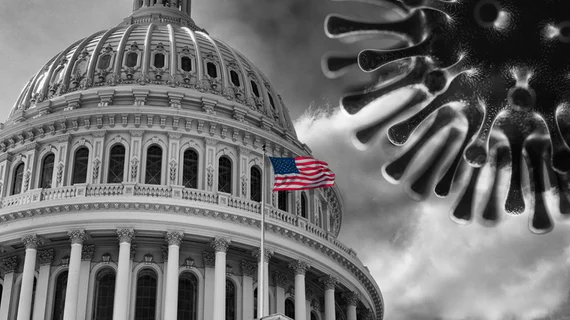Congress has reached a bipartisan deal to avert impending Medicare pay cuts, drawing praise from radiology and other specialties Tuesday evening.
Physician Rep. Kim Schrier, MD, D-Wash., introduced legislation Dec. 7 alongside Rep. Steven Horsford, D-Nev., which would blunt several reimbursement reductions looming on Jan. 1. The bill includes a one-year, 3% increase in the Medicare Physician Fee Schedule, short of the 3.75% some had sought.
“A pandemic is not the time to be cutting access to doctors for patients on Medicare,” Schrier said in a statement. “This legislation will bring some stability to the Medicare payment system to ensure patients can keep seeing their doctors. And doctors, who have been on the frontlines during this pandemic, can continue to keep their doors open.”
In addition, it would delay 2% Medicare sequester payment reductions for the first three months of 2022, transitioning to a 1% cut in the three months afterward. It would also delay payment reductions tied to the clinical laboratory fee schedule, postpone the radiation oncology payment model, and pause the 4% PAYGO cut—all until 2023.
The American College of Radiology and other physician groups praised the proposal Tuesday night, noting it will mitigate a “significant portion” of reductions set to take effect Jan. 1. Others voicing their support included the American Medical Association, California Medical Association and Surgical Care Coalition.
“The Medicare provisions in the legislative agreement will help to stabilize the healthcare system while policymakers consider solutions to the ongoing structural problems with Medicare’s broken payment system,” the college said in a statement. “The ACR urges lawmakers in the House and Senate to quickly pass this critical bill or ensure that the language is included in any larger legislation passed by Congress prior to the end of this session.”
The Radiology Business Management Association said Tuesday night that the cuts would amount to about 3% for diagnostic radiology (and higher on the interventional side). Its estimate includes 1.25% sequestration cuts averaged out over the entire year. That compares to previous initial estimates of roughly 10.75% in reimbursement reductions for the specialty.
House representatives passed the bill Tuesday night in a 222-212 vote, while the Senate will consider it later this week.
Editor's note: This story has been updated after House lawmakers passed the legislation Tuesday night.

